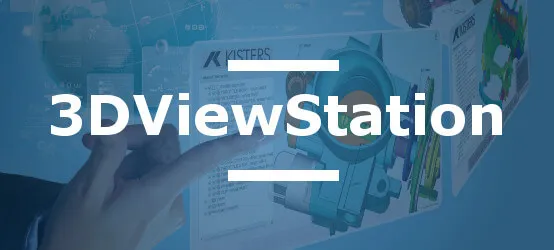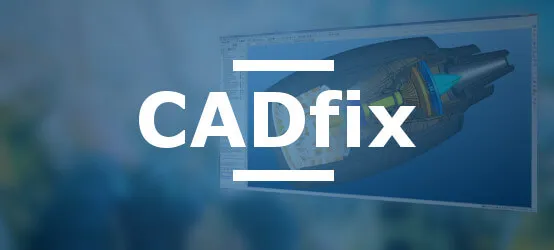Table of Contents
- History and Evolution of the VDA-FS Format
- Technical Characteristics and Specifications
- VDA-FS vs Other CAD Exchange Formats
- CAD Interop Solutions for the VDA-FS Format
- Best Practices for VDA-FS File Exchange
- VDA-FS: Retrospective and Perspectives
The VDA-FS format (Verband der Automobilindustrie - Flächenschnittstelle) represents a historical CAD interoperability solution specifically developed to meet the technical data exchange needs in the German automotive industry. This standardized format played a decisive role in establishing collaborative processes between manufacturers and suppliers, enabling the transmission of complex surface models between different CAD systems. Although largely replaced today by more recent formats such as STEP, understanding the specifics of VDA-FS remains essential for companies that need to manage technical archives or maintain exchanges with partners still using this format.
History and Evolution of the VDA-FS Format
The VDA-FS format originated from standardization efforts initiated by the German Automotive Industry Association (Verband der Automobilindustrie) in the 1980s, a time when the digitization of design processes was radically transforming engineers' working methods.
Birth and Initial Development
- Developed by the VDA to meet the specific needs of the German automotive industry
- Initially focused on surface models, a central element of automotive design
- Gradual adoption as a de facto standard for exchanges between manufacturers and suppliers
Evolution and Versions
- Version 1.0 established the fundamentals of surface data exchange
- Version 2.0 introduced additional capabilities, notably support for solids via the VDAFS TOP element
- Progressive integration with the main CAD systems of the time, particularly CATIA V5
Decline and Replacement
- The emergence of STEP as an international standard (ISO 10303) gradually marginalized VDA-FS
- The intrinsic limitations of the format in the face of increasingly complex geometries
- The gradual transition to more complete and robust exchange formats such as STEP
Despite its progressive replacement, VDA-FS remains an important milestone in the history of technical data interoperability and continues to influence current CAD data exchange standards.
Technical Characteristics and Specifications
The VDA-FS format is distinguished by its technical characteristics specifically adapted to the exchange of surface models in the automotive industry.
Fundamental Structure of the Format
- ASCII text format facilitating analysis and debugging
- Hierarchical organization of geometric data
- Native support for NURBS curves (Non-Uniform Rational B-Splines)
- Ability to represent complex surfaces with precision
Supported Geometric Elements
- Points and Cartesian coordinates
- Parametric and analytical curves
- Parametric surfaces (particularly Bézier surfaces)
- Solids via the TOP element in version 2.0
Relationships with Quality Standards
- Alignment with the VDA 6.1 standard, a quality reference in the German automotive industry
- Validation mechanisms to ensure the integrity of exchanged data
- Geometric tolerance requirements conforming to industrial standards
Technical Limitations
- Native absence of support for complete metadata
- Limited management of complex assemblies
- Difficulties in transmitting the parametric construction tree
- Challenges related to geometric "healing" during conversions
Understanding these technical characteristics is essential to maximize the efficiency of data exchanges using the VDA-FS format and to diagnose potential problems during conversions between different CAD systems.
VDA-FS vs Other CAD Exchange Formats
To fully understand the place of VDA-FS in the CAD interoperability ecosystem, the table below presents a comparison with other major exchange formats.
| Comparison Criteria | VDA-FS | STEP | IGES | JT |
|---|---|---|---|---|
| Geometric Entity Coverage | Limited, focused on surfaces | Wide coverage of geometric and non-geometric entities | Fairly wide range of geometric entities | Complete entity coverage |
| History Preservation | No | No | No | No |
| Metadata Support | Limited | Excellent, includes PMI | Limited | Good, includes PMI |
| Precision for Complex Surfaces | Very good, specific to automotive | Good | Average | Good |
| International Adoption | Mainly Germany and automotive | Worldwide, all sectors | Mainly North America | Worldwide, strong in aerospace |
| Supported Versions | 1.0 to 2.0 | AP 203 E1/E2, AP 214, AP 242 | 5.1, 5.2, 5.3 | Up to v10.9 |
| Visualization Capabilities | Basic | Basic | Basic | Advanced |
| Compression and Level of Detail | No | Limited | No | Excellent |
| PLM Integration | Limited | Good | Limited | Excellent |
| PMI Support | No | Complete | No | Complete |
| Data Type | Surface/Solid | B-rep/Facet | B-rep | B-rep/Facet |
This comparison highlights why STEP has ultimately supplanted VDA-FS in most modern industrial workflows, while recognizing the historical strengths of the VDA-FS format in specific contexts of the automotive industry.
The STEP format offers better versatility and greater information richness, which explains its widespread adoption as an international standard. However, VDA-FS retains historical and technical relevance in certain sectors, particularly for its precision in representing complex surfaces specific to the automotive industry.
CAD Interop Solutions for the VDA-FS Format
CAD Interop distributes several specialized software solutions that allow efficient work with the VDA-FS format, addressing the various needs of CAD professionals.
3DViewStation for Visualization and Analysis
Kisters' 3DViewStation software offers advanced capabilities for working with VDA-FS files, distinguished by its performance and ease of use.
Key Features for VDA-FS Files
- High-performance visualization of VDA-FS models, even large ones
- Geometric analysis tools adapted to complex surfaces
- Precise measurement on imported models
- Creation of exploded views and animations for technical documentation
- Geometric comparison with other formats for validation
Conversion Capabilities
- Import of VDA-FS files for visualization and analysis
- Export to other supported formats
- Preservation of structures and properties during conversions
- Batch conversion options to process multiple files
Integration and Workflow
- Intuitive user interface based on Microsoft standards
- Possible integration with PLM systems via complete API
- Support for DMU (Digital Mock-Up) operations on VDA-FS models
- Protection of sensitive data during sharing
3DViewStation represents a complete solution for companies that regularly need to consult, analyze, or convert VDA-FS files as part of their engineering and manufacturing processes.
CADfix for Repair and Simplification
CADfix is particularly suited to address common problems encountered in VDA-FS files, offering specialized tools for model repair and optimization.
VDA-FS Model Repair Capabilities
- Automatic detection and correction of surface continuity problems
- Repair of defective transitions between adjacent surfaces
- Reconstruction of degraded surfaces after multiple conversions
- Correction of topology problems in solid models
Simplification Tools
- Controlled reduction of model complexity while preserving accuracy
- Intelligent defeaturing to eliminate non-essential details
- Mesh optimization for AR/VR applications
- Preparation of models for finite element analysis
Specialized Workflows for VDA-FS
- Comprehensive diagnosis of geometric quality issues
- Guided process for repairing common defects
- Reliable conversion to other formats with validation
- Detailed reports on modifications made to models
For VDA-FS files in particular, which may present geometric quality challenges due to intrinsic limitations of the format or multiple conversions, CADfix offers robust solutions ensuring data integrity for downstream uses such as manufacturing or virtual reality.
Best Practices for VDA-FS File Exchange
Despite its progressive replacement by more recent formats, many companies continue to work with VDA-FS files, particularly for compatibility with legacy systems or technical archives. Here are the recommended best practices to optimize exchanges using this format.
Model Preparation Before Export
- Check and correct geometric problems in the source CAD system
- Simplify models by removing non-essential details
- Clearly organize the model structure to facilitate interpretation
- Document the units and coordinate systems used
Optimal Export Configuration
- Select appropriate tolerance parameters based on the target application
- Use format version 2.0 for models containing solids
- Export complex assemblies separately to limit errors
- Generate export logs to trace potential problems
Post-Conversion Validation
- Visually inspect converted models to detect anomalies
- Perform comparative measurements between source and target models
- Verify the topological integrity of surfaces and solids
- Use CADfix to repair identified problems before use
Managing Exchanges with Partners
- Establish clear specifications regarding the required level of detail
- Define testing and validation procedures for exchanged files
- Maintain a repository documenting known issues and their solutions
- Consider migration to STEP for new projects while maintaining VDA-FS compatibility for existing ones
Applying these best practices helps minimize problems related to the use of the VDA-FS format and ensures a smoother transition to more modern standards such as STEP.
VDA-FS: Retrospective and Perspectives
The VDA-FS format, although largely superseded by more recent and comprehensive standards such as STEP, continues to play a role in the CAD interoperability ecosystem, particularly in the automotive and aerospace industries. Its specialization in the precise representation of complex surfaces explains its persistence in certain established workflows and in the technical archives of many organizations.
For companies that still need to work with this format, the solutions distributed by CAD Interop such as 3DViewStation and CADfix offer powerful tools to visualize, analyze, repair, and convert VDA-FS files, thus ensuring the continuity of engineering and manufacturing processes.
The future of CAD data interoperability is clearly moving towards richer formats such as STEP, JT, or 3D PDF, capable of transporting not only geometry but also manufacturing information (PMI) and metadata. Nevertheless, understanding historical formats like VDA-FS remains valuable for effectively managing the digital heritage of manufacturing companies and ensuring compatibility with legacy systems.
Ultimately, whether maintaining technical archives or interacting with partners still using VDA-FS, CAD professionals can rely on CAD Interop's specialized solutions to address the specific challenges related to this format and ensure a harmonious transition to modern technical data exchange standards.



